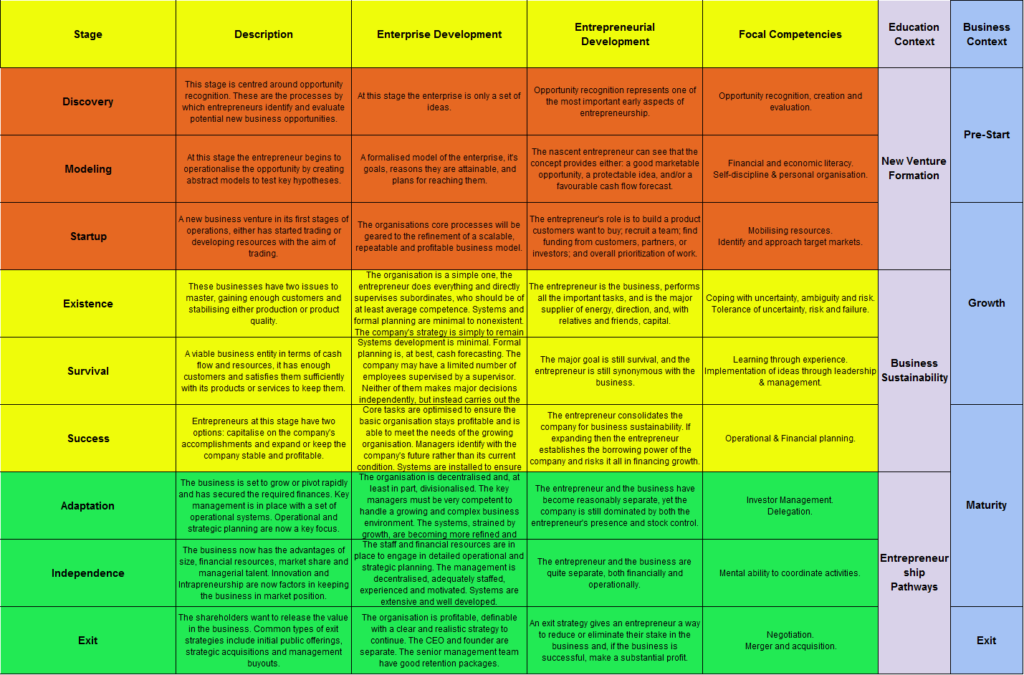Entrepreneurship education has evolved significantly within universities over the past 100 years. From the early days of offering business courses to developing dedicated programs and centers, universities have come a long way in their efforts to promote entrepreneurship education. In this blog, we will explore the evolution of entrepreneurship education, highlighting research, pedagogy, and trends.
Early Days of Entrepreneurship Education
Entrepreneurship education can be traced back to the early 1900s, when business schools started offering courses on small business management. However, the focus was on traditional business management, and entrepreneurship was not a separate subject. It was only in the 1960s that entrepreneurship was recognized as a separate field of study, and universities began offering courses dedicated to entrepreneurship.
Research in Entrepreneurship Education
The research in entrepreneurship education started in the 1980s when David Birch published a book called “The Job Generation Process.” In this book, he argued that small businesses were responsible for creating most of the new jobs in the United States. This idea was further supported by other researchers, such as David Storey and Paul Reynolds, who showed that small businesses were an important source of innovation and job creation.
In the 1990s, researchers started focusing on the pedagogy of entrepreneurship education. William Gartner and Scott Shane published a paper in 1995 that argued that entrepreneurship education should be taught experientially. They proposed that students should be given opportunities to start and run their own businesses, and that this would be the best way to learn about entrepreneurship.
Pedagogy of Entrepreneurship Education
The pedagogy of entrepreneurship education has evolved significantly over the years. In the early days, entrepreneurship was taught using traditional business management methods, such as lectures and case studies. However, as research showed that entrepreneurship was best learned through experiential methods, universities started offering more hands-on courses.
Today, entrepreneurship education is typically taught using a combination of traditional methods and experiential learning. For example, students may attend lectures and read case studies, but they will also have the opportunity to start and run their own businesses, work on consulting projects for real clients, or participate in entrepreneurship competitions.
Trends in Entrepreneurship Education
There are several trends in entrepreneurship education that have emerged in recent years. One trend is the development of interdisciplinary entrepreneurship programs. These programs bring together students and faculty from different disciplines, such as engineering, science, and design, to work on entrepreneurial projects.
Another trend is the development of social entrepreneurship programs. These programs focus on teaching students how to start businesses that have a social or environmental impact. Social entrepreneurship has become increasingly popular in recent years, as students are increasingly interested in starting businesses that can make a positive impact on society.
In addition, there has been a trend towards global entrepreneurship education. Many universities now offer study abroad programs or international entrepreneurship competitions, which give students the opportunity to learn about entrepreneurship in different cultural contexts.
Conclusion
Entrepreneurship education has come a long way over the past 100 years. From offering business courses to developing dedicated programs and centers, universities have recognized the importance of entrepreneurship education in preparing students for the workforce. The research has shown that experiential learning is the best way to teach entrepreneurship, and universities have responded by offering more hands-on courses. The trends in entrepreneurship education reflect the changing needs of students and society, with a focus on interdisciplinary, social, and global entrepreneurship. As the world of work continues to change, entrepreneurship education will continue to evolve to meet the needs of students and society.





